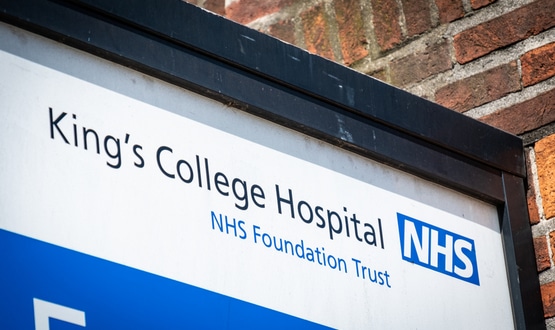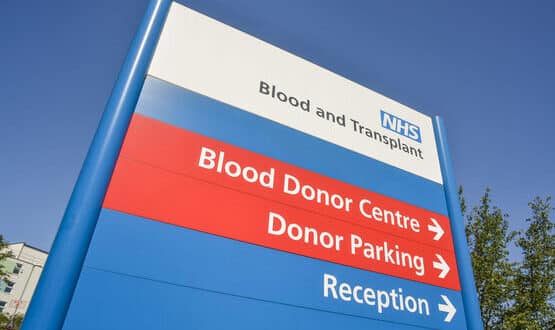CSAM says portals the key to hospital integration
- 18 September 2007
 |
CSAM, a Norwegian specialist in hospital systems integration using portal technology, has announced plans for ambitious international growth.
Already the company has installations in Norway, Denmark and China, with the system translated into local languages. CSAM is now gearing up for a push into new markets, and is busily targeting Russian and UK opportunities.
The company believes that its portal approach to integrating the heterogeneous range of systems used by today’s hospitals to present clinicians with a single view of information, offers the only viable affordable route to integrated healthcare organisations and care delivery.
Oracle, CSAM’s partner, describes the 2 year old firm as one of the "most exciting companies in e-health", and the viable alternative to unaffordable rip and replace strategies.
Speaking at a press tour of Oslo’s national Rlkshospitalet, CSAM’s key reference site, Charles Scatchard, vice president of Oracle Healthcare, EMEA, said: "This is possibly the most exciting example of an e-health company enabling regional and national networks in IT. Their approach arguably provides the only way of web-enabling and integrating system cost effectively."
Scatchard told E-Health Insider that Oracle has closely studied a lot of portal approaches internationally, including firms from the US, but was clear the CSAM was the most compelling. "What we’ve seen in CSAM is better than anything than anything we’ve seen out of the US."
He said that while small hospitals may be able to deploy one standardised IT solution, this just isn’t a viable option for most larger hospitals that have an array of systems, each containing valuable data, but rarely integrated. Integration of different systems with a portal-based access approach was the only affordable approach likely to succeed he argued.
At Oslo’s national Rlkshospitalet, CSAM has successfully integrated over 200 systems and applications. CSAM originally began ten years ago as an initiative within the hospital. "The hospital had 100’s of clinical systems, many platforms and were in a mess," said Sverre Flatby, executive chairman of CSAM.
Flatby said this meant that CSAM had developed what has become its Plexus product in a hospital with "a lot of complexity and processes".
He outlined the portal approach: "Plexus provides a portal view of all existing systems providing a single view of all patients’ details, all in one place, using one interface and log-in."
Hallam Laerum, clinical information system manager at the hospital, elaborated. "Although we have 100s of systems and applications in practice the information in isolated IT systems is inaccessible to the infrequent clinical user."
He said that so far the hospital’s clinical portal provides a single view of 14 key systems, including: electronic patient records, the hospital information system, the labs system, picture archiving and communications (PACS), microbiology, pathology and patient administration.
"It provides over 80% of the information clinicians need. It means that a lot of information is available from one place which allows for strong access control." The only system deliberately excluded is psychology.
Clinicians can access all patients coming into their department, but their access is logged and the information displayed is tailored to their role. Records for celebrities are locked down. Most compelling is the extent to which the system is in daily use by clinicians as their single view of patient’s information.
It is an approach that is attracting international interest. Guy’s and St Thomas’ Hospitals, one of England’s leading teaching hospital groups, has visited Rlkshospitalet and short-listed CSAM as part of a current procurement.
Flatby said that because most trusts have invested a lot of money and effort in existing IT systems, such as patient administration, labs, order communications and electronic patient records, they need strategies to get the most out of them. "Our system handles all the different systems, working through a single sign-on. It handles authentications, orders, investigations and workflow."
Lars Hofstad, managing director of CSAM, said that in addition to being used across the Oslo’s Rlkshospitalet, Plexus is also live at Ulleval, Norway’s largest hospital, and four Swedish clinics. In addition Plexus is live at Peking University Medical centre.
The Swedish contract with hospital group LTV was won 18-months ago following a Europe-wide procurement. Plexus is so far live in four clinics but LTV have indicated plans to now roll-out the system to all its clinics.
On China Hofstad, says: "We are now developing a strategy for China to take advantage of the opportunity we have today." CSAM’s initial project with Peking University medical centre completed in July.
"In many ways we are a start-up. But we’re a start-up with a product developed in a demanding clinical environment and live in seven sites," says Hofstad. But, he stresses, unlike other start-ups CSAM has a proven product that has rigorously tested.
Plexus is built from the ground up on core Oracle software, including: 10g database, Oracle Fusion Middleware, Oracle SOA [service orientated architecture] suite. CSAM are also now incorporating Oracle’s Health Technology, Business Intelligence and Identity Management suite.
Despite the Oracle pedigree Hofstad says that CSAM’s Plexus product is not tied to any one platform when integrating different health systems, "we have integrated working with all major system platforms, including .Net".
Having established reference sites in three countries and two continents, CSAM which counts some heavyweight Norwegian backers, is now aiming for rapid international growth.
CSAM’s expansion plans are based on identifying Oracle partners to work with, such as such as technology services and big systems integrators. The aim over the next six to 12 months is to establish six new CSAM partners says Hofstad.
He says that the company already has activities well under way in Russia and the UK. A party of Russian’s were being ushered into the Rlkshospitalet’s innovation centre immediately after the press tour. Oracle’s Scatchard was extremely bullish about the potential opportunity in Russia.
"We have delivered and are into production in three different countries, we have a live product now, not in 12 to 18 months," says Hofstad.
He added: "We have hospitals around Europe coming to see us to come and see the solution. The problem we have is fitting them in."




